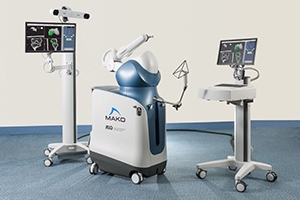Dancers, with their demanding routines and acrobatic movements, often push their bodies to the limit. This physical intensity can take a toll on their joints, particularly the hips. Hip health is crucial for dancers to maintain optimal performance and longevity in their careers.
Unique Challenges for Dancers
Dancers face several unique challenges that can put their hip health at risk. They include:
- Repetitive Movements: The repetitive nature of dance movements, such as pirouettes and leaps, can lead to overuse injuries.
- High Impact: Many dance styles, like ballet and tap, involve high-impact movements that can strain the hip joint.
- Flexibility Demands: The need for extreme flexibility can put undue stress on the hip muscles and ligaments.
- Poor Posture: Improper posture, especially during practice or performances, can contribute to hip misalignment and pain.
Common Hip Injuries in Dancers
Dancers are prone to certain hip injuries due to the repetitive and high-impact nature of their movements. Common hip injuries in dancers include:
- Hip Flexor Strains: Overuse of the hip flexor muscles, especially when combined with poor flexibility, can lead to strains or tears.
- Labral Tears: The labrum, a cartilage ring around the hip socket, can become torn due to repetitive movements or traumatic injuries.
- Femoroacetabular Impingement (FAI) also known as Hip Impingement: This condition occurs when the hip joint bones don't fit together properly, leading to pain and inflammation.
- Bursitis: Inflammation of the bursa, a fluid-filled sac that cushions the hip joint, can cause pain and tenderness.
Prevention Strategies
Dancers can take proactive steps to prevent hip injuries by adopting the following strategies:
- Proper Warm-up and Cool-down: A thorough warm-up can prepare the muscles and joints for the demands of dance, while a cool-down can help prevent stiffness and soreness.
- Strength Training: Incorporate strength training exercises to improve muscle balance and stability around the hip joint.
- Flexibility Training: Regular stretching can help maintain flexibility and reduce the risk of injuries.
- Rest and Recovery: Ensure adequate rest and recovery to allow the body to repair and regenerate.
- Good Footwear: Wear appropriate dance shoes that provide support and cushioning.
- Technique and Alignment: Focus on proper technique and alignment to minimize stress on the hip joint.
Treatment Options
Dancers experiencing hip pain may require various treatment options, depending on the severity of the injury. These include:
- Conservative Treatment: Initial treatment often involves rest, ice, compression, and elevation (RICE), along with pain management medications.
- Physical Therapy: A physical therapist can provide exercises to improve strength, flexibility, and range of motion.
- Corticosteroid Injections: In some cases, corticosteroid injections may be used to reduce inflammation.
- Surgery: If conservative treatments fail, surgery may be necessary to repair damaged tissue or address underlying structural issues.
- Regenerative Medicine: This emerging field uses biological therapies to promote tissue repair and regeneration, potentially aiding in the healing of dance-related hip injuries.
Remember: Early detection and treatment are key to preventing long-term complications. If you're experiencing hip pain or discomfort, it's important to consult with a qualified healthcare professional.
At American Hip Institute, our team of experts specializes in hip health and can provide personalized care tailored to the unique needs of dancers. We offer a comprehensive range of services, including diagnosis, treatment, and prevention strategies. Don't let hip pain hinder your dance career. Contact us today to schedule a consultation.




